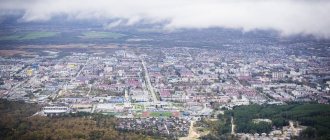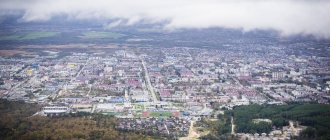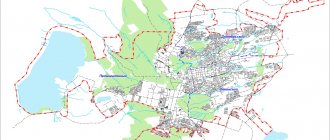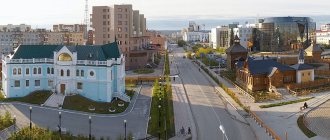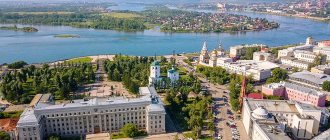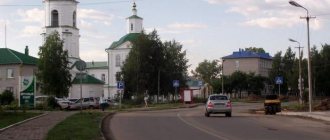It’s unlikely that anyone has heard of the large Russian island of Karafuto. In fact, everyone knows him. This is how the Japanese called the island of Sakhalin in their own way. Its capital is Yuzhno-Sakhalinsk. In the century before last, the best advertisement for the city was made by Chekhov, who toured the island and wrote a whole book about it. These places are worth seeing with your own eyes.
Yuzhno-Sakhalinsk
General information
This Russian city is located in the southeast of Sakhalin Island, on the Susuya River, and is the sixth largest settlement in the Far East. The Sea of Okhotsk is 25 km from it, and it is separated from the capital of the Russian Federation by 9,420 km.
The area of Yuzhno-Sakhalinsk is approximately 165 thousand square kilometers. Thanks to its moderate monsoon climate, this city is often called Russian Australia. This settlement connects a number of highways of regional importance. In addition, there is an airport and a railway station in the capital of the Sakhalin District.
All residential buildings in this city are built using specially developed technology, so they can withstand strong earthquakes up to magnitude eight. The authorities had to resort to such a measure, since this settlement is located in a seismic zone.
An excerpt characterizing the population of Yuzhno-Sakhalinsk
“What do you mean?...” said Speransky, quietly lowering his eyes. “I am an admirer of Montesquieu,” said Prince Andrei. - And his idea that le principe des monarchies est l'honneur, me parait incontestable. Certains droits et privileges de la noblesse me paraissent etre des moyens de soutenir ce sentiment. [the basis of monarchies is honor, it seems to me beyond doubt. Some rights and privileges of the nobility seem to me to be a means of maintaining this feeling.] The smile disappeared on Speransky’s white face and his physiognomy benefited a lot from this. He probably found Prince Andrei’s idea interesting. “Si vous envisagez la question sous ce point de vue, [If that’s how you look at the subject,” he began, pronouncing French with obvious difficulty and speaking even more slowly than in Russian, but completely calmly. He said that honor, l'honneur, cannot be supported by advantages harmful to the course of service, that honor, l'honneur, is either: the negative concept of not doing reprehensible acts, or a well-known source of competition for obtaining approval and awards expressing it. His arguments were concise, simple and clear. The institution that maintains this honor, the source of competition, is an institution similar to the Legion d'honneur [Order of the Legion of Honor] of the great Emperor Napoleon, which does not harm, but promotes the success of the service, and not the advantage of class or court. “I don’t argue, but it cannot be denied that the court advantage achieved the same goal,” said Prince Andrei: “every courtier considers himself obliged to bear his position with dignity.” “But you didn’t want to use it, prince,” said Speransky, smiling, indicating that he wanted to end the argument, which was awkward for his interlocutor, with courtesy. “If you do me the honor of welcoming me on Wednesday,” he added, “then I, after talking with Magnitsky, will tell you what may interest you, and in addition I will have the pleasure of talking with you in more detail.” “He closed his eyes, bowed, and a la francaise, [in the French manner], without saying goodbye, trying to be unnoticed, he left the hall. During the first time of his stay in St. Petersburg, Prince Andrei felt his entire mindset, developed in his solitary life, completely obscured by those petty worries that gripped him in St. Petersburg. In the evening, returning home, he wrote down in a memory book 4 or 5 necessary visits or rendez vous [meetings] at the appointed hours. The mechanism of life, the order of the day in such a way as to be everywhere on time, took up a large share of the energy of life itself. He did nothing, didn’t even think about anything and didn’t have time to think, but only spoke and successfully said what he had previously thought about in the village. He sometimes noticed with displeasure that he happened to repeat the same thing on the same day, in different societies. But he was so busy all day that he didn’t have time to think about the fact that he didn’t think anything. Speransky, both on his first meeting with him at Kochubey’s, and then in the middle of the house, where Speransky, face to face, having received Bolkonsky, spoke with him for a long time and trustingly, made a strong impression on Prince Andrei. Prince Andrei considered such a huge number of people to be despicable and insignificant creatures, he so wanted to find in another the living ideal of the perfection for which he was striving, that he easily believed that in Speransky he found this ideal of a completely reasonable and virtuous person. If Speransky had been from the same society from which Prince Andrei was, the same upbringing and moral habits, then Bolkonsky would soon have found his weak, human, non-heroic sides, but now this logical mindset, strange to him, inspired him with respect all the more that he did not quite understand it. In addition, Speransky, either because he appreciated the abilities of Prince Andrei, or because he found it necessary to acquire him for himself, Speransky flirted with Prince Andrei with his impartial, calm mind and flattered Prince Andrei with that subtle flattery, combined with arrogance, which consists in silent recognition his interlocutor with himself, together with the only person capable of understanding all the stupidity of everyone else, and the rationality and depth of his thoughts. During their long conversation on Wednesday evening, Speransky said more than once: “We look at everything that comes out of the general level of inveterate habit...” or with a smile: “But we want the wolves to be fed and the sheep to be safe...” or : “They can’t understand this...” and all with an expression that said: “We: you and I, we understand what they are and who we are.” This first, long conversation with Speransky only strengthened in Prince Andrei the feeling with which he saw Speransky for the first time. He saw in him a reasonable, strictly thinking, enormously intelligent man who had achieved power with energy and perseverance and used it only for the good of Russia. Speransky, in the eyes of Prince Andrei, was precisely that person who rationally explains all the phenomena of life, recognizes as valid only what is reasonable, and knows how to apply to everything the standard of rationality, which he himself so wanted to be. Everything seemed so simple and clear in Speransky’s presentation that Prince Andrei involuntarily agreed with him in everything. If he objected and argued, it was only because he deliberately wanted to be independent and not completely submit to Speransky’s opinions. Everything was so, everything was good, but one thing embarrassed Prince Andrei: it was Speransky’s cold, mirror-like gaze, which did not let into his soul, and his white, tender hand, which Prince Andrei involuntarily looked at, as they usually look at people’s hands, having power. For some reason this mirror look and this gentle hand irritated Prince Andrei. Prince Andrei was unpleasantly struck by the too much contempt for people that he noticed in Speransky, and the variety of methods in the evidence that he cited to support his opinions. He used all possible instruments of thought, excluding comparisons, and too boldly, as it seemed to Prince Andrei, he moved from one to another. Either he became a practical activist and condemned dreamers, then he became a satirist and ironically laughed at his opponents, then he became strictly logical, then he suddenly rose into the realm of metaphysics. (He used this last tool of evidence especially often.) He transferred the question to metaphysical heights, moved into the definitions of space, time, thought, and, making refutations from there, again descended to the ground of dispute.
Settlement history
When the city of Yuzhno-Sakhalinsk was founded in 1882, its population was then only 56 people, and it was called the settlement of Vladimirovka. Over the next ten years the numbers did not change significantly, and they were mainly Russian exiles.
At the beginning of 1905, a Japanese settlement was formed on this territory, which led to a radical change in the number of residents in the city, and their national composition also changed. After the end of World War II, all Japanese were deported to their homeland, and their place was taken by settlers from other regions of the Soviet Union.
The latest censuses that took place in this city showed that the population of Yuzhno-Sakhalinsk has grown significantly when compared with other periods, and, moreover, its decline in the suburbs and villages has significantly decreased. This happens for the reasons that this settlement is attractive to people due to the fact that it is a regional center, and mild climatic conditions prevail on its territory. In addition, it has an advantageous geographical position and recently there has been an increased development of its economy and many industries.
Japanese heritage
Yuzhno-Sakhalinsk cannot boast of outstanding architectural masterpieces. Since it was originally built with wooden houses, severe fires often occurred. For this reason, no old buildings have been preserved in the city. The legacy of the Japanese occupation was a system of clear rectangular buildings. All streets ran either parallel or perpendicular to the railway. There was no greenery at all in the city center. Only on the outskirts did the Japanese create a small park with a pond.
Vladimirovka in the 1880s
Traditionally, the Japanese built very densely. Single-story frame shacks huddled together. They did not have yards or outbuildings. The internal plywood walls of the houses were often sliding, and the floors were earthen. The dwellings were heated by portable iron stoves, from which ceramic pipes were routed along the outer walls. Alas, typical Japanese residential buildings have not survived to this day.
Toyohara in the 1930s
This period is evidenced only by documents and photographs in the Sakhalin Regional Museum of Local Lore. It is interesting because it occupies a former Japanese building, built in the traditional “teikan-zukuri” style. This style appeared in Japan in the Middle Ages, and then became popular again at the beginning of the 20th century. There are no other buildings like this in Russia. The museum's exposition gives a complete picture not only of the history of the development of Sakhalin, but also of the flora and fauna of the island. Recently, another exhibit was a Japanese tank from the Second World War.
Number of inhabitants currently
So, how much is the population in Yuzhno-Sakhalinsk for this period? In this city, as of January 1, 2016, 199,770 residents were registered, which is the third part of the entire Sakhalin region. Moreover, only five percent of them are rural residents, and the rest are city dwellers, so the city’s population density is approximately 220 people per square kilometer.
The average age of Sakhalin residents is 36 years. About ten percent more women live in this locality than men.
Current demographic situation
The population of Yuzhno-Sakhalinsk is constantly growing. Therefore, in recent years, exclusively positive dynamics have been observed, both in migration processes and in the natural increase in the number of residents. Thus, at the moment, in the reports of social workers, one can see that the birth rate far exceeds the death rate in this city.
This trend is certainly facilitated by the fact that this year there were 1.4 times more marriages than divorces registered. Only 57,000 people of retirement age live in the territory of the regional center, of which 53% are employed.
Population
| Population | ||||||
| 1959[8] | 1970[9] | 1979[10] | 1989[11] | 2002[12] | 2009[13] | 2010[14] |
| 85 510 | ↗113 380 | ↗148 468 | ↗169 663 | ↗182 576 | ↘182 239 | ↗189 010 |
| 2011[15] | 2012[16] | 2013[17] | 2014[18] | 2015[19] | 2016[20] | 2017[21] |
| ↘188 907 | ↗193 235 | ↗196 973 | ↗199 488 | ↗199 767 | ↗200 739 | ↗201 985 |
| 2018[22] | 2019[23] | 2020[24] | 2021[2] | |||
| ↗206 140 | ↗208 000 | ↘207 708 | ↘207 284 | |||
National composition of the city
Mostly Russians populate Yuzhno-Sakhalinsk. The population of this city, however, consists of many nationalities. The regional center is home to a fairly large Korean diaspora and makes up approximately 9% of the total number of citizens. This nationality has remained here since the times when there was a Japanese settlement in the city. At the moment, Yuzhno-Sakhalinsk can be considered the cultural center of Koreans.
In addition to these nationalities, approximately 4% of Ukrainians, 1.55% of Tatars and 1% of Belarusians live in the city.
mass media
A television
- 3 - 1TV Russia
- 5 - Russia-24 (Russia-24)
- 10- Russia-1 (Russia-1)
- 12 - ASTV (Alternative Sakhalin Television)
- 21 — The first multiplex digital TV DVB T2
- 23 - Che
- 27 – Home / OTV (Sakhalin regional television)
- 30 – NTV Russia
- 33 – STS
- 35 – Ren-TV / Echo of Sakhalin
- 43 – Match TV Russia (ex. Russia-2)
- 46 – St. Petersburg – Channel_5
- 49 - Rossiya-K (Russia-K)
- 51 - Second multiplex of digital TV DVB T2
Radio
- 87.9 Autoradio (make plans)
- 88.3 Retro FM
- 88.9 Radio Recording
- 89.9 Russian Radio
- 101.7 Radio Chanson
- 102.5 Europe Plus
- 102.9 Humor FM
- 103.5 Mayak
- 104.4 Love Radio
- 105.1 Radio Dacha (make plans)
- 105.5 Radio ASTV
- 106.0 Radio Russia
- 106.5 Dear Radio
- 107.2 Vesti FM
Education and culture
The young population of Yuzhno-Sakhalinsk can obtain a future profession in eight different universities located in the city. More than 8,000 students are currently studying there. Young residents of the regional center receive their knowledge in thirty secondary schools or two evening educational institutions.
Also in this locality there are quite a lot of interesting places and attractions that attract a large number of tourists from other countries to admire the main cultural institutions of the region concentrated there. Among them are the following: Museum of Local Lore, International Theater Center named after A.P. Chekhov, puppet theater and others. In addition, the city has a wonderful park of culture and recreation, where locals and visitors love to spend their leisure time. Near this place there is also a zoo, some interesting monuments dedicated to the heroes of past years.
Also, the population of the city of Yuzhno-Sakhalinsk for their education visits 23 libraries and seven cultural centers located in this regional center. Sports clubs and children's and youth schools are popular among younger residents, with more than two thousand people currently enrolled.
Map
| Yuzhno-Sakhalinsk: maps |
Yuzhno-Sakhalinsk: photo from space (Google Maps) Yuzhno-Sakhalinsk: photo from space (Microsoft Virtual Earth)
| Yuzhno-Sakhalinsk. Nearest cities. Distances in km. on the map (in brackets along roads) + direction. Using the hyperlink in the distance , you can get the route (information courtesy of the AutoTransInfo website) | |||
| 1 | Aniva | 30 () | SW |
| 2 | Korsakov | 35 (42) | YU |
| 3 | Dolinsk | 41 (44) | WITH |
| 4 | Kholmsk | 53 (81) | Z |
| 5 | Nevelsk | 73 (83) | SW |
| 6 | Chekhov | 78 () | NW |
| 7 | Gornozavodsk | 80 () | SW |
| 8 | Tomari | 103 () | NW |
| 9 | Krasnogorsk | 170 (248) | WITH |
| 10 | Makarov | 185 (216) | WITH |
| 11 | Uglegorsk | 241 (318) | WITH |
| 12 | Shakhtersk | 249 () | WITH |
| 13 | Poronaysk | 253 (290) | WITH |
| 14 | Sovetskaya Gavan | 289 (387) | NW |
a brief description of
Located in the southeastern part of Sakhalin Island, on the river. Susuya, 10,417 km east of Moscow. Railway junction lines and highways.
The climate is temperate monsoon. The average temperature in January is -6, in August +19. Precipitation is about 800 mm per year.
Territory (sq. km): 905
Information about the city of Yuzhno-Sakhalinsk on the Russian Wikipedia site
Historical sketch
Founded in 1882 as the village of Vladimirovka. The name comes from the personal name Vladimir, which belonged to the local hard labor manager.
In 1905, according to the Portsmouth Peace Treaty (1905), which ended the Russian-Japanese War of 1904-05, the southern part of Sakhalin Island (up to the 50th parallel) the village ceded to Japan. The settlement became a city, the administrative center of Southern Sakhalin and was called Toyohara (Toyohara).
In 1945 it was returned to Russia. Liberated on August 25, 1945 by troops of the 2nd Far Eastern Front during the Yuzhno-Sakhalin operation.
The city of Yuzhno-Sakhalinsk since 1946; named after its location in the south of the island.
In 1995, the villages of Novoaleksandrovsk (formerly a village, PGT from 1989 to 1995, 4.4 thousand inhabitants, 1959; 8.0 thousand inhabitants, 1979) and Lugovoye (PGT from 1989 to 1995) were transferred from the Aniva district and included within the city of Yuzhno-Sakhalinsk.
Municipal indicators
| Index | 1990 | 1999 | 2001 | 2003 | 2005 |
| Demography | |||||
| Number of births, per 1000 population | 14.1 | 8.7 | 9.6 | 10.6 | 11.1 |
| Number of deaths, per 1000 population | 7.7 | 10.7 | 11.8 | 13.7 | 13.9 |
| Natural increase (decrease), per 1000 population | 6.4 | -2 | -2.2 | -3.1 | -2.8 |
| Standard of living of the population and social sphere | |||||
| Average monthly nominal accrued wages, rub. | 0.508 | 3373 | 5929.6 | 11750.5 | 18174.4 |
| Average housing area per inhabitant (at the end of the year), sq.m. | 15.4 | 17.5 | 18.7 | 18.8 | 19.3 |
| Number of preschool institutions, pcs. | 68 | 45 | 42 | 37 | 36 |
| Number of children in preschool institutions, thousand people | 12.7 | 6.8 | 6.8 | 6.7 | 6.9 |
| Enrollment of children in preschool educational institutions (at the end of the year), as a percentage of the number of children of the corresponding age, % | 74.9 | 79.1 | |||
| Number of daytime educational institutions (at the beginning of the school year), pcs. | 29 | 36 | 37 | 31 | 28 |
| Number of students in daytime educational institutions, thousand people | 24.6 | 27.5 | 25.6 | 22.2 | 18.4 |
| Number of doctors, people. | 1134 | 1260 | 1263 | 1340 | 1125 |
| Number of nursing staff, people. | 2264 | 2836 | 2723 | 2974 | 2635 |
| Number of hospital institutions, pcs. | 12 | 12 | 13 | 13 | 13 |
| Number of hospital beds, thousand units | 3.8 | 3 | 3.2 | 3.3 | 3.4 |
| Number of medical outpatient clinics, pcs. | 28 | 22 | 36 | 37 | 46 |
| Capacity of medical outpatient clinics, visits per shift, thousand units. | 3.8 | 4.3 | 5 | 5.1 | 7.4 |
| Number of registered crimes, pcs. | 3671 | 4693 | 4924 | 5194 | 6875 |
| Persons who committed crimes were identified, persons. | 1287 | 1764 | 1638 | 1076 | 1345 |
| Economy, industry | |||||
| Number of enterprises and organizations (at the end of the year), pcs. | 448 | 7461 | 6217 | 6342 | 7864 |
| Number of operating enterprises by type of activity: mining (at the end of the year), pcs. | 3 | ||||
| Number of operating enterprises by type of activity: manufacturing (at the end of the year), pcs. | 50 | ||||
| Number of operating enterprises by type of activity production and distribution of electricity, gas and water (at the end of the year), pcs. | 15 | ||||
| Volume of shipped goods of own production by type of mining (in actual prices), million rubles. | 675.1 | ||||
| Volume of shipped goods of own production by type of manufacturing (in actual prices), million rubles. | 2859.5 | ||||
| Volume of shipped goods of own production by type of production and distribution of electricity, gas and water (in actual current prices), million rubles. | 2956.5 | ||||
| Construction | |||||
| Volume of work performed by type of activity “Construction” (until 2004 - volume of work performed under construction contracts), million rubles. | 0.142 | 1506.5 | 3043.6 | 8635.9 | 10925.4 |
| Commissioning of residential buildings, thousand sq.m. of total area | 56.1 | 33.3 | 17.9 | 31.8 | 29.2 |
| Commissioning of residential buildings, apartments | 264 | 166 | 274 | 273 | |
| Commissioning of preschool institutions, places | 755 | 0 | 0 | 0 | 0 |
| Commissioning of educational institutions, places | 1176 | 0 | 0 | 0 | 0 |
| Commissioning of hospital facilities, beds | 90 | 0 | 54 | 0 | |
| Commissioning of outpatient clinics, visits per shift | 0 | 0 | |||
| Transport | |||||
| Number of bus routes (in intracity traffic), pcs. | 17 | 21 | 22 | 15 | |
| Number of passengers transported by buses per year (in intracity traffic), million people. | 72.7 | 2.3 | 4.3 | 3.8 | 2.6 |
| Connection | |||||
| Number of telephone sets of the city public telephone network, thousand units. | 33 | 45.2 | 59.7 | 67 | 73.3 |
| Number of residential telephone sets of the city public telephone network, thousand units. | 14.2 | 30.5 | 43.5 | 48 | 51 |
| Number of payphones of the city telephone network (including universal ones), pcs. | 337 | 321 | |||
| Trade and services to the population | |||||
| Retail trade turnover (in actual prices), million rubles. | 0.393 | 2887.5 | 6770.2 | 11200.6 | 17573 |
| Retail trade turnover (in actual prices), per capita, rub. | 2.286 | 15417 | 36233 | 64150 | 101290 |
| Index of physical volume of retail trade turnover, % compared to the previous year | 109.3 | 106.6 | |||
| Index of physical volume of public catering turnover, % compared to the previous year | 118.9 | 124 | |||
| Number of stores, pavilions (at the end of the year), pcs. | 37 | 33 | |||
| Sales area of shops, pavilions (at the end of the year), sq.m. | 4501 | 5686.7 | |||
| Volume of paid services to the population (in actual prices), million rubles. | 0.064 | 1069.9 | 2508.5 | 5416 | 10730.5 |
| Volume of paid services to the population (in actual prices), per capita, rub. | 0.4 | 5712 | 13429 | 30966 | 59272 |
| Volume of household services to the population (in actual prices), million rubles. | 0.019 | 117.2 | 168.9 | 497.1 | 1003.5 |
| Volume of household services to the population (in actual prices), per capita, rub. | 0.114 | 626 | 904 | 2842 | 5543 |
| Investments | |||||
| Investments in fixed assets (in actual prices), million rubles. | 0.158 | 6281.9 | 2023.9 | 5595.9 | 10733.3 |
| Share of investments in fixed assets financed from budgetary funds in the total volume of investments, % | 11.7 | 13.4 | 4.7 | 6.6 | |
Data sources:
- Regions of Russia. Main characteristics of the constituent entities of the Russian Federation: statistical collection. Goskomstat of Russia. - M:, 2003.
- Regions of Russia. Basic socio-economic indicators of cities. Statistical collection. Rosstat. - M:, 2005. p. 369
- Regions of Russia. Basic socio-economic indicators of cities. 2006. Statistical collection. Rosstat. - M:, 2006. p. 365
Culture, science, education
Sakhalin Institute of Marine Biology. Institute of Marine Geology and Geophysics of the Far Eastern Center of the Russian Academy of Sciences, Sakhalin Branch of the Pacific Research Institute of Fisheries and Oceanography.
Pedagogical Institute, branch of Moscow Commercial University, etc.
Theatres: Drama named after A.P. Chekhov, dolls.
Museums: local history, art.
Museums, galleries, exhibition halls
Literary and Art Museum of Books by A.P.
Chekhov "Sakhalin Island" 693020, Sakhalin region, Yuzhno-Sakhalinsk, st. Kurilskaya, 42 Phone(s): (4242) 43-6636 Website: https://chekhov-book-museum.ru/ Sakhalin Regional Museum of Local Lore 693010, Sakhalin Region, Yuzhno-Sakhalinsk, Kommunistichesky Ave. , no. 29 Phone(s): (4242) 50-6107 72-8799 Website: https://www.sakhalinmuseum.ru/
Sakhalin Regional Art Museum 693020, Sakhalin Region, Yuzhno-Sakhalinsk, st. Lenina, 137 Phone(s): (4242) 72-3643 Website: https://sakhartmuseum.ru/
Architecture, sights
Yuzhno-Sakhalinsk is located on the wide Susunayskaya valley at the foot of Rossiyskaya Mountain. Covered with multi-storey buildings. In the outskirts of the city, houses from the late 19th and early 20th centuries have been preserved.
| Population by year (thousands of inhabitants) | |||||||
| 1959 | 85.5 | 1986 | 163 | 2005 | 173.6 | 2014 | 192.7 |
| 1962 | 86 | 1989 | 159.3 | 2006 | 173.4 | 2015 | 192.8 |
| 1967 | 92 | 1992 | 164.8 | 2007 | 173.2 | 2016 | 193.7 |
| 1970 | 105.8 | 1996 | 181.0 | 2008 | 173.8 | 2017 | 194.9 |
| 1973 | 120 | 1998 | 180.0 | 2010 | 174.8 | 2018 | 199.0 |
| 1976 | 130 | 2000 | 179.2 | 2011 | 181.7 | 2019 | 200.9 |
| 1979 | 139.9 | 2001 | 179.2 | 2012 | 186.3 | 2020 | 200.6 |
| 1982 | 150 | 2003 | 175.1 | 2013 | 190.2 | 2021 | 200.2 |
Employment of citizens
The officially registered unemployed population of Yuzhno-Sakhalinsk is only 0.3% of the total number of residents or 275 people. At the same time, local organizations and firms require more than 18,000 workers.
As of February 1, 2016, 11,600 legal entities and 8,800 individual entrepreneurs were registered in this locality, which is more than 65% of the total number of all firms and companies in the Sakhalin region. That is why there is such a large increase in the migration of the working-age population to the regional center of the district.
How to get there
Currently, tourists mainly travel to Yuzhno-Sakhalinsk by air. The number of flights and the list of airports from which flights operate depend on the season. There are flights from Yekaterinburg, Novosibirsk, Khabarovsk, Vladivostok. Planes from Moscow fly to Sakhalin all year round. Travel time is about 8 hours. In winter, the airport on the island may be closed for some time due to weather conditions. Since the airport is located within the city, the easiest way to get to the center is by taxi.
Less commonly used is the ferry option from Vanino (Khabarovsk Territory) to Kholmsk (Sakhalin). In this case, the journey takes about 14 hours. You can buy a ticket without a cabin (seated seats) or take a place in a one-, two-, or eight-berth cabin. There are trains from Khabarovsk to the port of Vanino (the journey takes 25 hours). Buses run from the port of Kholmsk to Yuzhno-Sakhalinsk (93 km). Since the number of seats on the ferry is limited, tickets should be purchased in advance. This is especially true in the summer.
Income
In this locality, over the past decade, a constant increase in average wages has been recorded, thanks to which many young people come to work in Yuzhno-Sakhalinsk. The population of this city this year began to receive wages 10% more than last year, which is approximately 77,200 rubles.
The average monthly pension has also increased by approximately 2.1%, and now people of non-working age receive about 17,050 rubles. At the same time, the cost of the minimum food package this year is equal to 5,400 rubles, which is 120 rubles. more compared to the previous period.
Industrial sectors
In economic development, this city is ahead of all settlements in the Sakhalin region. More than 32% of all industrial products are produced on its territory, about 27% of the total volume of contract work is carried out, and 100% of wholesale trade and 65% of retail trade are carried out.
Also, this settlement has become a center where companies working in the oil and gas industry cooperate with each other, since the energy resources of the area are currently being developed on its territory.
In addition, in Yuzhno-Sakhalinsk people still work in the food sector. This city produces many different types of cheeses, processed meats, mineral waters, confectionery, dairy products, beer, soft drinks and sausages. There is also a developed fishing industry here, represented by 130 enterprises.
In addition to domestic companies and firms, more than a hundred different companies with foreign capital also operate in this city.
Currently, the administration of the regional capital has begun to develop a strategic plan, which will spell out how Yuzhno-Sakhalinsk should develop until 2022. The population of this city, according to this document, will have the right to further participate in the selection of key decisions, as well as their successful implementation. Local authorities hope that the presence of such a strategy will make the mechanism for managing their settlement more open and transparent for Sakhalin residents and will ensure that the administration and members of the city community focus on promising areas of development of the regional center.
Outdoors
People also come to Yuzhno-Sakhalinsk to improve their health. The most famous health resort is the Sinegorsk Mineral Waters sanatorium. Healing water was discovered in these places at the beginning of the 20th century. Local residents were surprised by the water in the Sinegorka River, which had a characteristic sour taste. The first hospital was built here by the Japanese. Leaving the island, they disguised and concreted the source. It was only possible to rediscover it in the 60s.
The city has a Geological Museum
The peculiarity of the local water is that it has a high arsenic content. Don't be scared! In small doses this element is useful. It’s not for nothing that ancient healers said: “Everything is poison and everything is medicine. It's just a matter of quantity." Arsenic mineral waters are extremely rare in nature. In Yuzhno-Sakhalinsk, this natural medicine is used to treat diseases of the joints and lungs, as well as nervous disorders. An additional option to Sinegorsk mineral water can be the healing mud in the village of Goryachiye Klyuchi.
In order not to lead to illnesses, it is better to engage in their prevention. The sports and resort complex “Mountain Air” provides excellent opportunities for this. It is located just three kilometers from Yuzhno-Sakhalinsk. In winter, there are nine slopes, to which skiers are transported by a gondola-chair lift.
In the immediate vicinity of Yuzhno-Sakhalinsk there are many remarkable rocks
In summer it is worth taking a walk to the Yuzhno-Sakhalinsky mud volcano. It is located just two dozen kilometers northwest of the city. The best period to visit is from May to October. By jeep you can get almost to the volcano. The walk from the Novaya Derevnya railway station to the crater takes about two hours. The area of the mud field is six hectares. This is the largest mud volcano in Russia!
You can go skiing in Yuzhno-Sakhalinsk
It is also worth visiting the picturesque outlier “Frog”. It got its name from its characteristic shape, reminiscent of a sitting frog, ready to jump. An unusual natural formation is located near the village of Vestochka, two dozen kilometers from Yuzhno-Sakhalinsk. In addition to the rock, there is a river with a beautiful waterfall in which you can swim. Since the “Frog” is considered a “place of power,” the village even has an esoteric museum.
Mud volcano
A number of excursions have been developed for tourists coming to Yuzhno-Sakhalinsk. For example, there is an hour and a half trip by motor boat to a sea lion rookery in the Sea of Japan near the city of Nevelsk. There is an excursion to the cascade of Salyut waterfalls. Two waterfalls, 12 and 3 meters high, bubble near the former village of Svetlyaki. In the most picturesque place of the Nevelsky district there is a “Scandinavian trail” three kilometers long.
In the port of Korsakov, tourists are invited to get acquainted with the monastery, climb the Mountain of Tears, look at the monument to the First Hydrographers, and also take spectacular pictures from the observation deck. There is a walking route called “Cape Ostry”. It starts in the city of Dolinsk, passes through the cape, winds along the banks of small rivers and ends in the village of Lesnoye. In these places it is quite possible to meet a bear.
Tourists are offered an excursion to the sea lion rookery
Few people know that Sakhalin offers such a service as diving. Dive sites are located near small islands in the Sea of Japan. In particular, they are located 90 kilometers east of Yuzhno-Sakhalinsk near the village of Prigorodnoye and the city of Nevelsk. They offer diving in the company of sea lions. And near Moneron Island, thanks to the Tsushima Current, you can even admire the tropical underwater fauna.
The beauty of Sakhalin
And it’s really hard to believe (after all, it’s a region of the Far North!) that there is beach tourism on Sakhalin. Nevertheless, it is true. There are several places for recreation in the vicinity of Yuzhno-Sakhalinsk. The most famous are Aniva Beach and the beach in the village of Prigorodny on the shore of Aniva Bay. There are also beaches in Yablochny on the Sea of Japan and in the village of Okhotsk on the Sea of Okhotsk. There are about 40 hotels in Yuzhno-Sakhalinsk. It is impossible to stay here without a roof over your head.
